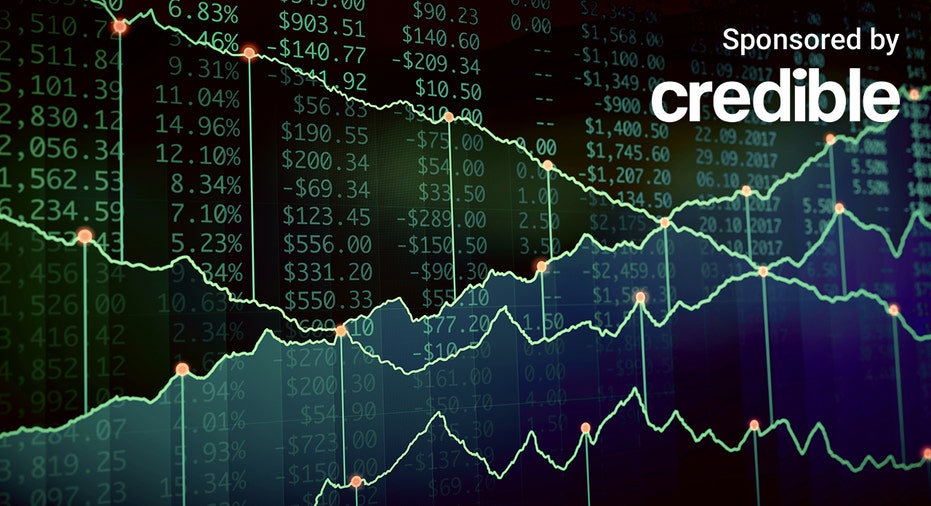Final estimate reduces Q4 2021 GDP to 6.9%: Bureau of Economic Analysis
Here’s what the fourth quarter’s economic growth means for interest rates

Fourth-quarter GDP decreased slightly from its previous estimate by the Bureau of Economic Analysis, but remains up significantly from the growth seen in the third quarter. (iStock)
Gross domestic product (GDP) growth in the United States was less than previously estimated in the fourth quarter of 2021 and downwardly revised to 6.9%, according to the third and final estimate from the Bureau of Economic Analysis (BEA).
The revision was a decrease from the second estimate of 7% but up from the GDP increase of 2.3% in the third quarter, the BEA said. It added that the updated estimate was "based on more complete source data" than previously available.
The fourth quarter’s GDP was driven primarily by increases in private inventory investment exports, personal consumption expenditures (PCE) and exports, which were partially offset by drops in federal, state and local government spending.
Despite the BEA's revised economic activity estimate being lower than its previous estimate, 6.9% economic growth rate is still strong for today’s economy. Consumers who want to take advantage of interest rates before the Fed's next rate hike can consider refinancing their private student loans. Visit Credible to find your personalized interest rate without affecting your credit score.
MOST AMERICANS SEEING EFFECTS OF INFLATION, SURVEY CLAIMS, WITH MANY NOT EXPECTING ANY RELIEF
Investments from auto dealers boost GDP, BEA says
Private inventory investment helped boost real GDP growth in Q4 2021, led by business investments made by motor vehicle dealers, according to the BEA.
The demand for new cars continues to surge as some drivers are waiting six to nine months just to get their new vehicles and dealers face record-low inventory levels. In fact, the total sales for new vehicles was forecasted to reach nearly 1.25 million cars in December 2021, down 20.5% from the year before, according to a release from J.D. Power.
"Retailers continue to sell most vehicles nearly as soon as they arrive in inventory," Thomas King, J.D. Power president of data and analytics, said at the time of the release. "This December, a record of nearly 57% of vehicles will be sold within 10 days of arriving at a dealership, while the average number of days a new vehicle sits on a dealer lot before being sold is on pace to fall to 17 days, a record low and down from 49 days a year ago."
Car prices are reaching new highs as the average price of a new vehicle surpassed $45,000, according to J.D. Power. This comes as the cost of living rises due to high inflation numbers, and national income has been unable to keep pace with rising market prices. In addition, a recent report by Edmunds found that a record 82.2% of people shopping for a new car paid above sticker price in January, compared to just 2.8% one year ago.
Drivers looking to save money amid this competitive auto sales environment could potentially lower their car insurance rate by comparing providers. Use Credible's free tools to shop around and lower your car insurance premium today.
FEDERAL RESERVE RAISES INTEREST RATES: WHAT TO DO NOW
Consumers can expect GDP to begin decreasing: expert
The GDP growth rate surged from Q3 to Q4 in 2021, but it could take a turn and begin decreasing in the year ahead due to the Federal Reserve's announcement that it is raising interest rates this year.
The central bank raised interest rates in March for the first time since 2018, and added that more rate hikes will likely be necessary throughout the rest of 2022 and in 2023. At the time of the announcement in March, one expert said that future rate hikes will likely slow economic growth in the coming year.
"The Federal Reserve signaled multiple hikes to federal funds rate throughout the year, projecting it to reach 1.9% by the end of 2022 – revising its December projection by a full percentage point," said Dawit Kebede, Credit Union National Association (CUNA) senior economist. "This will raise consumers' cost of borrowing and slow down spending. Consumer spending contributes to two-thirds of the gross domestic product – the value of all goods and services in the economy. The GDP growth projections will also decrease with the rising federal funds rate."
If you are looking to take advantage of interest rates before they increase more in 2022, you could consider refinancing your mortgage to lower your monthly payment. Contact Credible to speak to a home loan expert and get all of your questions answered.
Have a finance-related question, but don't know who to ask? Email The Credible Money Expert at moneyexpert@credible.com and your question might be answered by Credible in our Money Expert column.




















